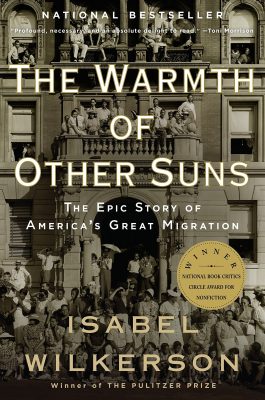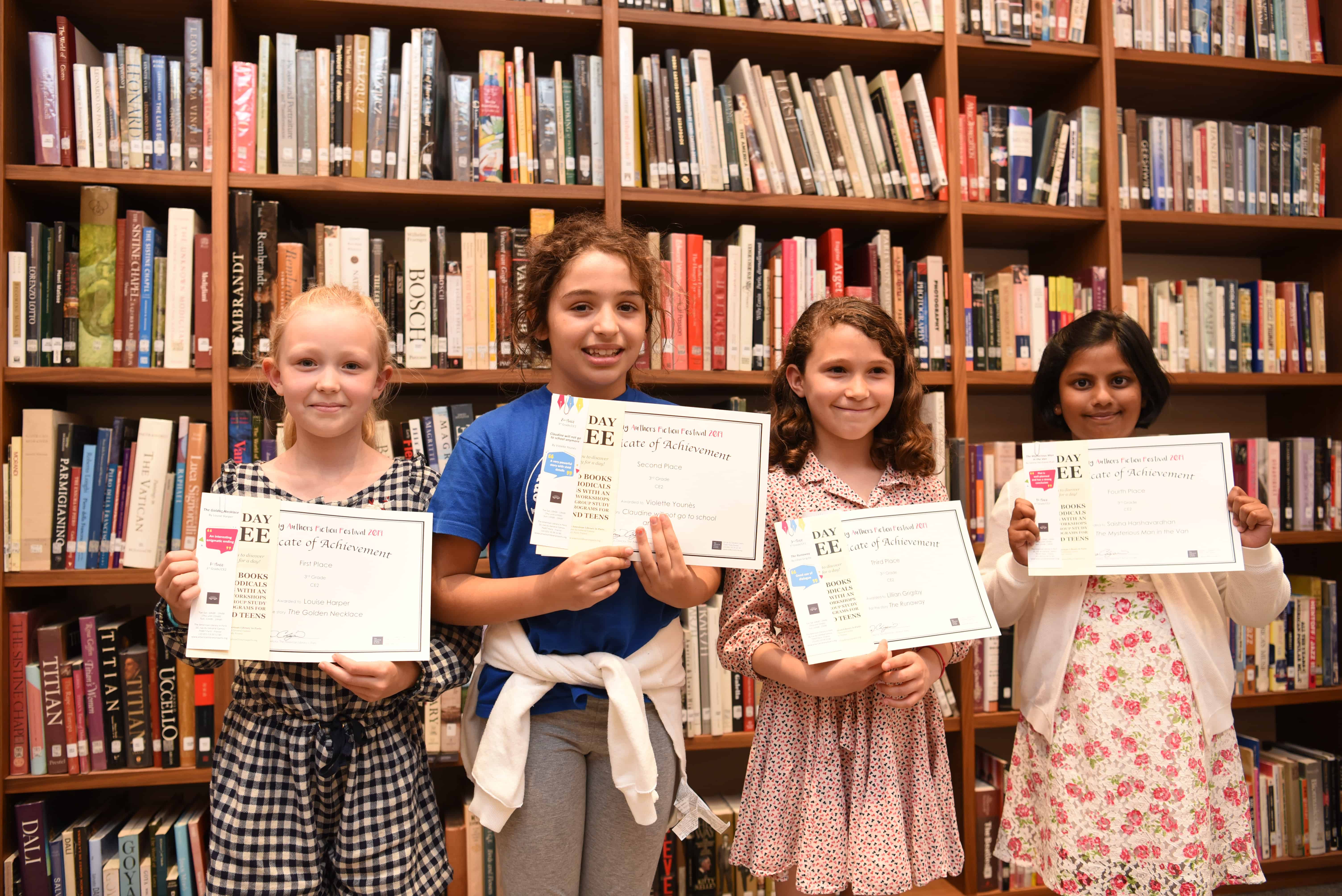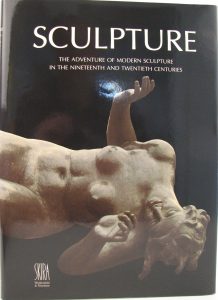
The last book that really excited us
13 September 2019
YAFF 2019: 3rd Grade – 1st Place “The Golden Necklace” by Louise Harper
15 September 2019The Library is pleased to present the Culture Picks for the month of September, curated, researched and written by volunteer Mike Duffy.
As always, we’ve selected books from our collection to go with the cultural visits. These books are displayed in the Members’ Lounge and available to be checked out.
Guest blogger: Mike Duffy lives in Paris following his retirement from a career in university teaching and management. He spent his first 30 years in Pennsylvania (born in Pittsburgh, college and grad school in Philadelphia), then spent a bit more than that in California where he taught accounting and finance at the Universities of California (Berkeley), Southern California and San Francisco. He can now be found in art museums, historic sites, and concert halls throughout the city.
ALBERTO GIACOMETTI — NARRATING THE BODY
INSTITUT GIACOMETTI
Through 6 November 2019
From his earliest work as the teenage son of a Swiss painter, Alberto Giacometti showed exceptional talent as well as top-notch skill as he progressed through his father’s art library, some formal lessons and occasional sculpting classes in Paris with the master sculptor of the time, Antoine Bourdelle. The more than 20 sketches in page margins or notebooks show his relentless effort to capture, to represent the human form and his copies of female figures by great predecessors — Dürer, van Eyck, Cézanne — illustrate his following the tried path of art students of the time. You can feel his youthful energy in the swirling lines used to create a human form.
With several others, though, Giacometti moved ahead of the times, abandoning conventional narration, figuration and form as part of the Cubist and Surrealist movements of the second and third decades of the 20th Century. Although he always held himself a bit separate from schools or cliques of artists (“aloof” is a word that is sometimes used to describe him), he was friendly with many of the Parisian avant-garde of the 1920s and ‘30s and created excellent works in line with their notions but which proved to be way-stations on his road to greatness. Among the works of this period, three sculptures in this exhibition stand out. First, a bronze, Woman (Flat V) (1929) a smooth almost plain black surface has concave and convex impressions, bare but beautiful hints of the female. It was praised at the time and demands the same now. A truly blocky figure from 1926 demonstrates his mastery of the tenets of Cubism and his mysterious, Cycladic Invisible Object (1934-1935), much commented on in his lifetime, captures the prehistoric wave that swept European art circles at the time. Giacometti thought that this rigid, rather strange figure got one closer to the reality of people than did so-called realistic sculpture. The sculptures and accompanying photographs add a lot to our understanding of the development of an artist mostly (and justly) known today for his unique vision of standing, sitting or walking figures.
Starting in the mid-1930s and especially after the Second World War, Giacometti moved into a style of painting and sculpture that places his work on a unique, universal, beyond-time plane. Always a lover of Egyptian and Assyrian figures, he reached far back in time to adopt stiff, upright, standing poses, arms straight at the sides, with legs tightly together or with one leg in front of the other. ThreeTall Woman figures from 1958 to 1960 stand dramatically, stoically, in one room. You can see materials and methods in the rough surfaces, the dabs of plaster added or molded by the artist’s fingers and the differences among plain plaster, painted plaster and bronze. The sculptures are so Egyptian looking, planted firmly on bases, often with little width or depth that it is easy to forget that Giacometti was reaching for representation or that the all the nude sculptures done from life present his wife Annette, her very tiny waist, very round hips on thin legs, pointed/separated breasts. In the sculptures and drawings you can perceive or project hints of her (or is it his?) sullen unhappiness.
Yet in their particularity there is also a stretching to universality, to an understanding of the human condition, of the nature of humanity, a search he shared in frequent conversations with the writer Jean Genet, the philosophers Jean Paul Sartre and Simone de Beauvoir and the playwright Samuel Beckett. Whether you want to call them Existentialists or pin any other label on them, Giacometti was one in spirit with them in striving to move far beyond the 1940s and 1950s, his work embodying a “universal quality” according to Sartre. Giacometti tried to capture what he thought of as “resemblance”, by which he meant not the details of a figure, but an understanding of the person, thereby of people. He titled most of his Nudes generically Figure or Woman, eight of which are displayed together, illustrating the sameness, the differences, the subtleties, those which are from life (always Annette) and those which are from memory.
(Note: some people thought that the ultra thin representations were impressions of the survivors of Nazi death camps and other wretched figures streaming through Paris after WWII, but Giacometti insisted that that was not his inspiration and his earliest figures of this type came before the War. He said that he was drawing or sculpting people as he perceived them, especially as he saw them at a distance walking toward him when they appeared smaller, thinner than life-size. He always thought that his Nudes were grounded in realism and, in fact, came to dismiss abstract art as a dead end. Rodin remained a hero and he commented that Brancusi was wasting his time. The subtle, dreamy, beautiful bronze doors designed in 1953 for the tomb of Pittsburgh department store owners Lillian and Edgar Kaufman at their mountain retreat Fallingwater link his expressive work to Rodin’s.)
Samuel Becket said of Giacometti, “He was not obsessed but possessed,” but obsessed, possessed, fixated, troubled or fascinated by the female body, he returned to the subject again and again. (In fact, he developed only a few themes and worked with only a few models through most of his career.) The Nudes displayed are standing alone even if near other figures, isolated perhaps, inside the box, frame or cage that marks Giacometti’s mature style as in the painted plaster Figurine in a Cage and Standing Nude in an interior (both 1950). Note: there is no expression, no emotion in the sculptures or drawings. There is also nothing sexy or erotic, no lust, no desire, nothing of a relationship to another. He was distant as an artist and, it seems, as a sexual being. Following a childhood illness, he was left infertile and was unable to be intimate with is wife. Throughout his life, though, he sought the company of prostitutes and enjoyed their companionship often at a distance in parlors as much as in bedrooms. He appears to have been bedeviled by artistic self-doubts as well, often complaining that he was a failure as an artist, frequently destroying works he had started, and rarely believing that any piece was truly finished. One painting here has the face painted over and painted over until there is a thick mound of paint where the face originally appeared and a new face started to the side. Giacometti knew himself to be a genius, however, and combined will power with self- doubt and ego to capture a deep reality through the presentation of the Nude.
This exhibition is housed an a beautiful example of Parisian Art Nouveau residential architecture. The outside of the building, the flooring, the wall paper and stencil painting, the leaded glass are well preserved and a superb addition to the works inside. The studio of Giacometti, which was much photographed and written about during his lifetime, was moved here and recreated behind glass. I recommend taking time to look through the very small space after you have seen the exhibition. Then you can appreciate the metal frames on which his sculptures were built and you can note his playful, modern pieces on the floor, several busts of his brother and collaborator Diego, and maybe only barely get a sense of the chaos that might have been this crowded work space which included a loft housing Alberto and his wife (and sometimes his brother) for many years. On this visit you won’t see his extensive works focused on his mother and very little of his thousands of pieces portraying his brother or other aspects of his half century artistic life, yet even within the frame of a show of a few works focused on a single subject, the female figure, the range, scope and depth of the great career of Alberto Giacometti is on display. In this exhibition we can find, as Giacometti did, frustration, joy, amazement and wonder.
Recommended books from the Library collection:







